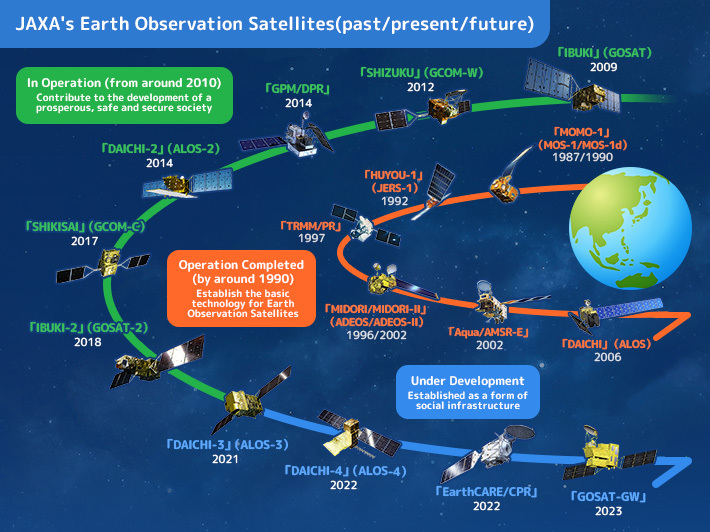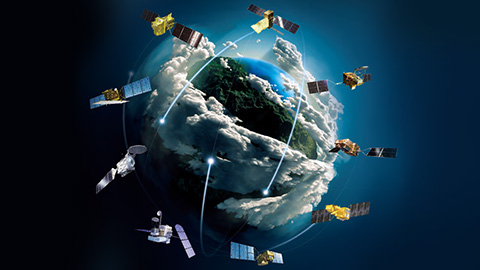History of JAXA’s Earth Observation Satellite
Beginning of the World’s Earth Observation Satellite History
The history of Earth observation satellites originated with the launch of the U.S. NASA Earth observation satellite “Landsat-1” in 1972. Landsat-1 had been used in the various fields including grain yield prediction, land use and resource exploration. Landsat series, Landsat 1 to 8 were launched continuously so far.
Beginning of JAXA’s Earth Observation Satellite History
In October 1978, the Earth Observation Center opened in Saitama Prefecture, and in January of the following year, the National Space Development Agency of Japan (NASDA), the predecessor of JAXA, began data reception from Landsat-2 and Landsat-3. After that, NASDA proceeded with its plan to launch its own Earth observation satellite in addition to data reception from overseas satellites.
Launch of JAXA’s Earth Observation Satellite
In February 1987, the Marine Observation Satellite-1 (MOS-1) “Momo-1” was launched from the Tanegashima Space Center, and Japan started the full-scale Earth observation by satellite. Over the next thirty years, we experienced several failures, including the loss of satellites without completing our missions. A total of 15 Earth observation satellites have been launched into space so far, including NASA satellites equipped with JAXA observation sensors, and six satellites are currently in operation. (As of April 2021)

List of Satellites and Projects
History of Japan’s Space Development
Japan’s space development began with the launch of the Pencil Rocket in 1955. The history up to 2020 can be viewed at a glance.











